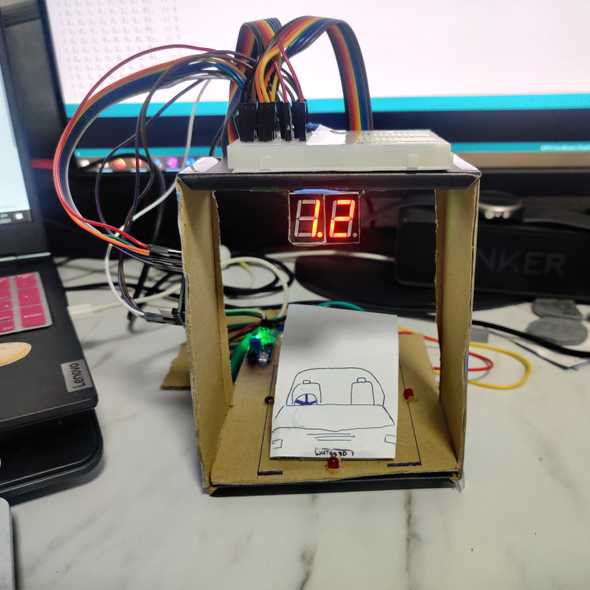Over the weekend of 18th - 19th September 2021, my team and I took part in What The Hack 2021, SUTD's annual hackathon. From the 4 problem topics presented to us in the umbrella theme of Environment, we decided to take on the topic of Transportation. I am glad to share that our team, HZAUP, was awarded the Best Transportation Hack for What The Hack 2021.
Initially, we were looking forward to having an exciting weekend hacking in campus. However, due to unforseen circumstances in the pandemic situation, we had to hack virtually. This did not dampen our spirits as we continued to throw out various ideas and concepts to come up with our hack.
To narrow down on the Transportation theme, through rounds of debate and discussion, we decided to focus on parking and the many problems that drivers face when trying to park at shopping malls or office buildings. Through personal experience, we share the common observation where lots far away from mall entrances would often be vacant as drivers race to find parking lots close to mall entrances. This led us to the main feature of ParkThere, which is the dynamic differential hourly pricing for different parking lots within the carpark.
Project Introduction
Primary Feature
In most car-parks, lots located further from the entrance are often severely under-utilised. Our solution, ParkThere, tackles this issue. The primary feature of this Smart Car-park, is a system designed to allocate different pricing per hour of parking for each section of the car-park, assigning lower prices for lots further away from the entrance. The prices of lots within each section are assigned automatically by the specific price algorithm that the management of the buildings choose. The different prices of parking are displayed on a monitor placed above the lots, giving drivers more incentive to park in lots further away from the entrance, making better use of all the lots, and reducing vehicle congestion nearer the entrance.
Secondary Features
ParkThere has secondary features that include a central parking guide that uses sensors and mini-speakers to ensure drivers park their car fully within the lot, and not exceed the allocated space. This ensures that all lots are usable, and prevents decentralised parked cars from occupying more than one lot.
Finally, the same cameras that provide information on the vacancy of each lot, records down the vehicle number, helping users who are leaving easily find their vehicles through a touchscreen system.
Prototyping Process
One limitation of hacking virtually was that it was difficult to collaborate on hardware. As such, while my team focused on refining the idea and dolling up our presentation, I experimented with the materials provided to creating a prototype.
Prototype 1
After we developed the initial idea of having a dynamic differential hourly pricing, I started to work on a prototype to present our idea and serve as a proof-of-concept. The picture below shows our first prototype, running on an ESP32.

Connecting the two 7 segment displays were a nightmare due to the number of cables required. Thankfully, I did not have to write the code for the display from scratch but instead modified the code from Jameco and adapted it for this project. I would have preferred to have a 4 digit 7 segment display with an I2C backpack, which would have made the protyping process quicker and less painful. Unfortunately, I did not have it on hand while developing this prototype.
In this prototype, the red LED lights in the lots as well as the price display were manually controlled via Serial input to the ESP32.
Prototype 2
After taking a look at the prototype, we realised that having the price of the lots shown on the floor may not be optimal as drivers would have a hard time reading the price. As such, I made use of a recycled cardboard box to "mount" the display to the "ceiling".

In addition, this second prototype also includes the use of an IR sensor (seen at the back left of the image - with green light illuminated). This allowed us to show a way in which ParkThere can detect whether cars were parked within the boundary of their lot. In this prototype, the 3 red LEDs on the perimeter of the lot will blink when the IR sensor detects that the car is out of the lot for more than 3 seconds. In an actual implementation, multiple sensors can be used in order to accurately determine the position of the car and whether the driver has left the vehicle before blinking the warning lights.
Experience
What The Hack 2021 was an interesting and enriching experience. While it was unfortunate that it had to be held virtually, the open ended problem statements allowed us to exercise our creativity. What The Hack was also the first hardware hackathon which I participated in, having only taken part in pure software hackathons in the past. Hope to be able to take part in a physical What The Hack in the future and meet other participants in person!
View the code on our GitHub repo: https://github.com/iangohy/ParkThere